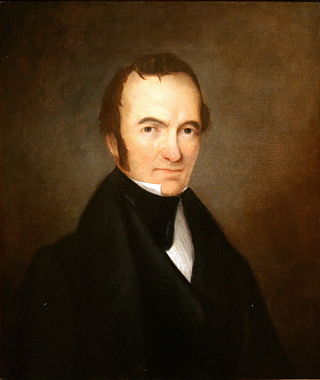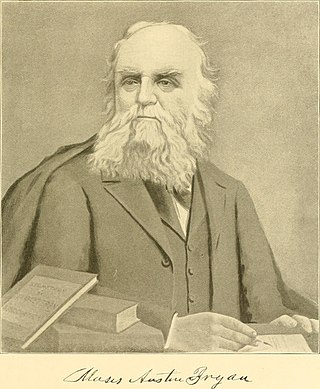
Brazoria County is a county in the U.S. state of Texas. As of the 2020 census, the population of the county was 372,031. The county seat is Angleton.

Stephen Fuller Austin was an American-born empresario. Known as the "Father of Texas" and the founder of Anglo Texas, he led the second and, ultimately, the successful colonization of the region by bringing 300 families and their slaves from the United States to the Tejas region of Mexico in 1825.

Jones Creek is a village in Brazoria County, Texas, United States. The population was 2,020 at the 2010 census. It is the first location in Texas where Stephen F. Austin settled.

The Battle of Velasco, fought June 25-26, 1832, was the first true military conflict between Mexico and Texians in the Texas Revolution, colloquially referred to as the "Boston Harbor of Texas" It began when Texian Militia attacked Fort Velasco, located in what was then Velasco and what is now the city of Surfside Beach. The Mexican commander during the conflict, Domingo de Ugartechea, tried to stop the Texians, under John Austin, from transporting a cannon down the Brazos River to attack the city of Anahuac. The Texian Militia eventually prevailed over the Mexicans. Ugartechea surrendered after a two-day battle, once he realized he would not be receiving reinforcements, and his soldiers had almost run out of ammunition.
William Joel Bryan was a Texas soldier and planter.

The "Old Three Hundred" were 297 grantees who purchased 307 parcels of land from Stephen Fuller Austin in Mexican Texas. Each grantee was head of a household, or, in some cases, a partnership of married men. Austin was an American approved in 1822 by Mexico as an empresario for this effort, after the nation had gained independence from Spain. By 1825 the colony had a population of 1,790, including 443 enslaved African Americans. Because the Americans believed they needed enslaved workers, Austin negotiated with the Mexican government to gain approval, as the new nation was opposed to slavery. Mexico abolished it in 1837.

Guy Morrison Bryan was a U.S. Representative from Texas.
Martin Varner was one of the original American settlers in Mexican Texas, known as the Old Three Hundred, and was a veteran of the Texas Revolution.
Chocolate Bayou is an unincorporated community in eastern Brazoria County, Texas, United States. According to the Handbook of Texas, the community had a population of 60 in 2000. It is located within the Greater Houston metropolitan area.
John Austin was a Texian settler, one of Stephen Austin's Old Three Hundred, and the Texian commander at the Battle of Velasco during the Anahuac Disturbances before Texas Revolution.

James Elijah Brown Austin was an American settler and brother of empresario Stephen F. Austin, "The Father of Texas." Counted also as one of the Old Three Hundred, he is listed in Spanish and Mexican records as "Santiago E.B. Austin". James and Stephen F. Austin are both brothers of Emily Margaret Brown Austin.

Emily Austin Bryan Perry was the sister of Stephen F. Austin and an early settler of Texas. She was an heir to Austin's estate when he died in 1836. She achieved significant political, economic and social status as a woman in Texas at a time when women were often not treated equal to men.

Moses Austin Bryan was an early settler of Texas. Moses served as Secretary for his uncle, Stephen F. Austin.
James Franklin Perry (1790–1853) was an American who was an early settler and prominent citizen of Texas. James married to Emily Austin Perry, and together they operated Peach Point Plantation. He was involved in Texas land distribution.
Gulf Prairie Cemetery is located in Jones Creek, Texas, United States, off State Highway 36 and County Road 304 and was the original resting place of Stephen F. Austin.
Stephen Samuel Perry (1825–1874) was an American early settler and pioneer of the state of Texas. He had managed the Peach Point Plantation, and he is credited with amassing and preserving significant historical manuscripts related to Texas history.
Perry's Landing, located in on the Brazos River in Jones Creek, Brazoria County, Texas, is named for James Franklin Perry. There is an Historical Marker for James Franklin Perry at the Gulf Prairie Cemetery.

The Durazno Plantation is a historic Southern plantation near Jones Creek, Texas.
Oakland is an unincorporated community in Brazoria County, Texas, United States. The community is located to the west of Freeport.









